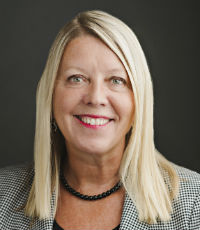Dorothy-Anna Orser of Echelon Wealth Partners is part of Wealth Professional Canada' Outstanding Portfolio Managers 2018

Firm: Echelon Wealth Partners
Position: Portfolio manager and senior investment advisor
Years in wealth management: 29
Years as a portfolio manager: 8
Certifications: CIM, PFP, FCSI, AIFP
Shifting interest-rate policy from the Bank of Canada is something discretionary managers need to keep on top of for their clients. For all the attention stocks get, it is fixed income that safeguards a portfolio against market volatility. In light of predicted rate hikes in Canada, but uncertainty over long-term central bank attitudes, Dorothy- Anna Orser of Echelon Wealth Partners outlines her current fixed-income strategy.
“For some time we have kept maturities short in our fixed-income investments,” she says. “This has worked well. Also, we have always liked REITs and allow for up to 15% in that sector. We view this as both a diversifying strategy and an alternative to fixedincome investments.”
In the equity space, the activity over the past few months has entailed more client interaction. It’s an important part of a portfolio manager’s job, especially during periods of increasing volatility.
“We understood the need to be in more frequent contact with some of our clients, specifically those who still watch their market values from month to month,” Orser says. “We encourage them to focus on the income of the account and, after that, yearover- year market value.”
In terms of geographic exposure, Orser recognizes that Canada is on the second tier of world players. That doesn’t mean she is directing her clients away from the domestic market, however.
“We invest up to 30% internationally,” she says. “But, at the end of the day, we realize most clients will be retiring in Canada and will require Canadian dollars. Based on that, we invest in Canadian companies that provide international exposure because a large portion of their growth is outside Canada. To name a few, these include Fairfax, SNC, TD, Inovalis, Dream Global REIT, Aberdeen closed-end bond fund and Opentext.”
“Our biggest concern [in emerging markets] is lack of regulation, but standards are rising. If you remain with larger companies and watch where the institutions are investing, you can reduce the risk”
In terms of securities selection, Orser has used ETFs for the majority of her career, so that sector’s current popularity comes as little surprise to her.
“We have looked forward to having more ETFs and have used them since the late 1980s when they were in their infancy,” she says. “Like any investment, they have their place and have to be viewed in the context of the market and the client’s objectives. We like to use them for offsetting individual stock/bond selections and also to diversify our portfolios, both domestically and geographically.”
Emerging markets are another favourite, as the risks associated with these jurisdictions have subsided in recent years.
“We add emerging markets for diversification,” Orser says. “Our biggest concern is lack of regulation, but standards in emerging markets are rising. If you remain with larger companies and watch where the institutions are investing, you can reduce the risk. This is also where we use ETFs.”
In investing in emerging markets, along with alternatives like REITs, Orser aims to provide the kind of diversification that protects her clients’ assets against downside risk. Opinion is split on how long the current market cycle will last, but all discretionary managers will find common ground on the need to have a solid asset mix.
“For some time now, because of extended low interest rates, our largest mandate is moderate growth,” Orser says. “Cash can now be up to 20%, using money market and short-term bond ETFs to offset market volatility. For the fixed-income portion – 10% to 30% – we have added private, fully guaranteed fixed-income investments to the mix. In the same way, for equities – 60% to 70% – we have included F-class global balanced funds in our selection.”



